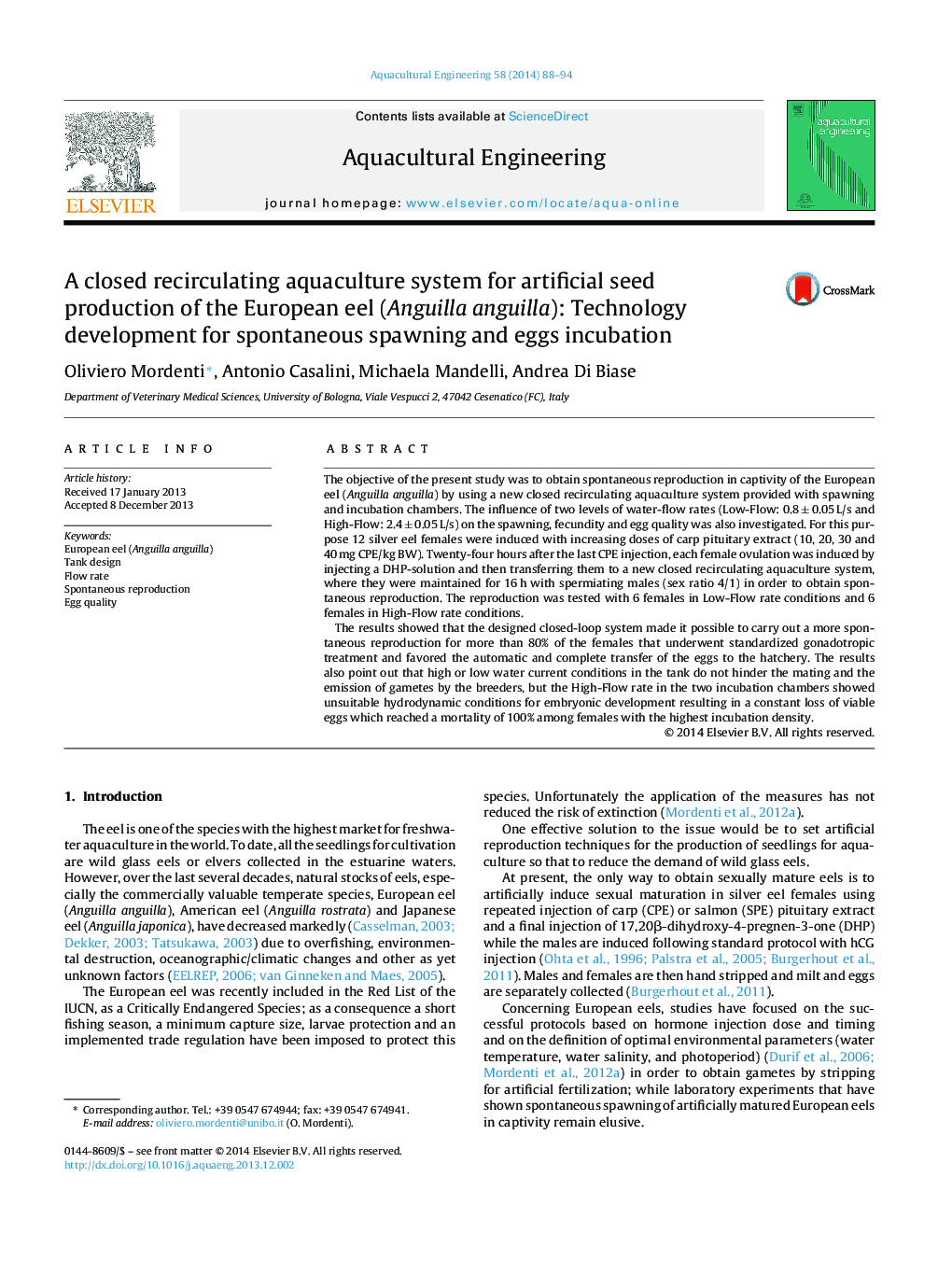| Article ID | Journal | Published Year | Pages | File Type |
|---|---|---|---|---|
| 4527210 | Aquacultural Engineering | 2014 | 7 Pages |
•A new recirculating system was designed and evaluated for artificial seed production of the European eel (Anguilla anguilla).•The influence of two different levels of water-flow rates on the spawning, fecundity and egg quality was also investigated.•The hydrodynamic conditions of the closed-circuit system and the different flow rate adopted in the trial have not hampered the eel reproductive activities.•A High-Flow rate in the incubation chamber causes a steady loss of viable eggs as time goes by.
The objective of the present study was to obtain spontaneous reproduction in captivity of the European eel (Anguilla anguilla) by using a new closed recirculating aquaculture system provided with spawning and incubation chambers. The influence of two levels of water-flow rates (Low-Flow: 0.8 ± 0.05 L/s and High-Flow: 2.4 ± 0.05 L/s) on the spawning, fecundity and egg quality was also investigated. For this purpose 12 silver eel females were induced with increasing doses of carp pituitary extract (10, 20, 30 and 40 mg CPE/kg BW). Twenty-four hours after the last CPE injection, each female ovulation was induced by injecting a DHP-solution and then transferring them to a new closed recirculating aquaculture system, where they were maintained for 16 h with spermiating males (sex ratio 4/1) in order to obtain spontaneous reproduction. The reproduction was tested with 6 females in Low-Flow rate conditions and 6 females in High-Flow rate conditions.The results showed that the designed closed-loop system made it possible to carry out a more spontaneous reproduction for more than 80% of the females that underwent standardized gonadotropic treatment and favored the automatic and complete transfer of the eggs to the hatchery. The results also point out that high or low water current conditions in the tank do not hinder the mating and the emission of gametes by the breeders, but the High-Flow rate in the two incubation chambers showed unsuitable hydrodynamic conditions for embryonic development resulting in a constant loss of viable eggs which reached a mortality of 100% among females with the highest incubation density.
